Q
What's the Insurance Cost of Honda City Hatchback? See How Much You Need to Pay
The insurance costs for the Honda City Hatchback typically range from RM1,800 to RM3,500. The exact price is influenced by multiple factors, including the vehicle's selling price (around RM80,000 to RM100,000), the car's age, the owner's age, driving record, the deductible (NCD - No Claim Discount), and the chosen insurance package (such as comprehensive insurance or third - party insurance). Young owners (under 25 years old) or those insuring a new car in its first year usually face higher premiums. On the other hand, owners with a high NCD (such as a 55% discount) can significantly reduce the costs. Additionally, due to the higher cost of parts, the insurance for the e:HEV hybrid version might be about 10 - 15% higher than that of the petrol version. It's advisable for owners to get accurate quotes through price - comparison websites or by directly consulting insurance companies. They should also prioritize insurance plans that include roadside assistance and cooperate with the original factory warranty to enhance protection.
Special Disclaimer: This content is published by users and does not represent the views or position of PCauto.
Related Q&A
Q
What's the Reslae Value of Honda City Hatchback?
The resale value of the Honda City Hatchback is influenced by multiple factors, including the vehicle's age, condition, mileage, market demand, and configuration version. Generally speaking, Honda models have an above - average resale rate in the local market.
Take the City Hatchback launched in 2021 as an example. The new car price of the entry - level 1.5 S is about RM75,000. After three years of use, the second - hand price is approximately between RM55,000 and RM60,000 (depending on the vehicle's condition), which means it retains about 70% - 75% of its original value. If you choose the higher - spec V or RS versions, the residual value may be slightly higher, but it is also affected by mileage and maintenance records.
The Honda brand is quite popular in the Malaysian second - hand car market, especially the City series with a vehicle age of less than five years. Due to its fuel economy and reliability, there is a consistent demand for them. It is recommended that before selling your car, you ensure regular maintenance, keep a complete maintenance record, and refer to the recent transaction prices of the same model to get a more reasonable second - hand valuation. However, the actual price still depends on market fluctuations and the buyer's bargaining situation.
Q
What's the Engine Displacement of Honda City Hatchback?
The Honda City is available in both gasoline and gasoline hybrid (HEV, MHEV) versions. All models are equipped with an engine with a displacement of 1498cc, which is equivalent to 1.5 liters. This engine size strikes a balance between power and fuel efficiency, making it suitable for daily commuting and various driving needs.
The 1498cc gasoline engine can deliver a maximum power of 121 horsepower and a peak torque of 145 Nm. It is paired with a Continuously Variable Transmission (CVT) that enables smooth gear shifts.
In the gasoline hybrid RS e:HEV model, the 1498cc engine works together with an electric motor. The engine has a maximum power of 98 horsepower and a torque of 127 Nm, while the electric motor provides an additional 109 horsepower and 253 Nm of torque. The combined power output offers better acceleration performance.
Q
What Engine Is Equipped by Honda City Hatchback?
The two - door version of the Honda Fit offers different engine options. Some models are equipped with a 1.5 - liter naturally aspirated gasoline engine, with a naturally aspirated (NA) intake system. The engine has a displacement of 1,498 cc, generating a maximum power of 89 kW at 6,600 rpm and a peak torque of 145 Nm at 4,300 rpm, with a maximum horsepower of 121 hp. The vehicle is also equipped with a continuously variable transmission (CVT).
There is also the RS e:HEV model. It is equipped with a 1.5 - liter gasoline engine and a hybrid system. The engine itself can produce a maximum power of 72 kW at 5,600 - 6,400 rpm and a torque of 127 Nm at 4,500 - 5,000 rpm, with a maximum horsepower of 98 hp. The electric motor can provide a total power of 80 kW, a torque of 253 Nm, and a maximum horsepower of 109 hp. The battery type is a lithium - iron phosphate battery with a capacity of 1.3 kWh, and it uses an electronic continuously variable transmission (E - CVT). These engines strike a balance between performance and fuel economy to meet various driving needs.
Q
What's the Type of Honda City Hatchback's Gearbox?
The type of the Honda City's gearbox varies depending on the model and its powertrain. For gasoline-powered models, the transmission type is CVT (Continuously Variable Transmission), providing a smooth driving experience by continuously adjusting the gear ratio, which helps optimize fuel efficiency and power output according to different driving conditions.
For hybrid models like the Honda City RS e:HEV, it is equipped with an E-CVT (Electronically Controlled Continuously Variable Transmission). The E-CVT is specifically designed for hybrid vehicles. It coordinates the power output between the engine and the electric motor, allowing smooth switching between different driving modes such as pure electric drive, engine drive, and hybrid drive, thereby enhancing the overall efficiency and performance of the hybrid system.
Q
What's the PCD Size of Honda City Hatchback?
The PCD (Pitch Circle Diameter) of the Honda City Hatchback is 5x114.3, which means the wheel's bolt holes are arranged in a circle with a diameter of 114.3 mm and consist of 5 bolt holes. This specification is the same as that of the Honda Jazz, certain City Sedan variants, and some mainstream Japanese models in the Malaysian market (such as the Toyota Vios and Nissan Almera), providing ample options for wheel upgrades or replacements.
When changing wheels or tires, owners should not only consider the PCD but also ensure compatibility with the center bore (CB) size, offset, and tire specifications to maintain safety and handling stability. If upgrading to larger or more customized wheels, it is advisable to consult a professional tire shop or an authorized Honda service center to avoid purchasing unsuitable rims that could compromise driving safety.
Q
Does Honda City Hatchback Support Apple Carplay?
The Honda City is equipped with Apple CarPlay. The all-new 2024 Honda Fit hatchback has been launched in Malaysia. The vehicle features an 8-inch multimedia touchscreen on the center console, which supports wireless connection with Apple CarPlay and Android Auto, allowing users to connect their iPhones to the car's infotainment system. Once connected, drivers can directly access various functions of their iPhones, such as navigation, music playback, making calls, and sending text messages, through the car's touchscreen or voice control. By integrating the familiar iPhone interface with the vehicle system, it enhances the in-car experience. This is a very convenient feature for those who rely on their iPhones for various daily tasks and want to achieve seamless connectivity while driving.
Q
What's the Brand of Honda City Hatchback's Tire?
The factory-fitted Honda City Hatchback in the Malaysian market is primarily equipped with Yokohama's BluEarth-GT series tires (specifically 185/55 R16 or 185/60 R15, depending on the variant). These tires emphasize fuel efficiency, durability, and wet-road safety, aligning with the City Hatchback's positioning as an economical family car. However, depending on the production year or promotional packages, some vehicles may be equipped with tires of other brands such as Dunlop or Bridgestone. The exact tire model should be verified based on the factory configuration at the time of purchase.
For owners looking to replace their tires, other brands in the same specification—such as Michelin Energy XM2+ or Continental CC6—can be considered. These are popular energy-saving and comfort-oriented tire options in the Malaysian market, offering a balance between fuel efficiency and quiet performance. Regular checks on tire wear and pressure are recommended, along with adhering to the manufacturer's suggested replacement intervals to ensure driving safety.
Q
Is Honda City Hatchback a Good Car? Learn the Pros and Cons Here
The Honda City Hatchback has many advantages and is a great car. In terms of appearance, it features a delicate, stylish, and sporty design. For instance, some models are equipped with a honeycomb radiator grille and an added rear spoiler. The RS version also has unique trim panels and side skirts, making it highly recognizable. The interior details have been optimized. The RS version has an all - black interior. In some models, the instrument panel has been upgraded to a 4.2 - inch TFT color screen. The central control touch - screen host is 8 inches, and the pixels of the rear - view camera have been improved.
In terms of safety and intelligent assistance, the entire vehicle lineup comes standard with multiple safety systems, such as ABS anti - lock braking, vehicle stability control, lane departure warning, and autonomous emergency braking. There's also an ISO FIX child seat interface. Some models are equipped with the Honda Sensing function, providing comprehensive protection for the driver. Additionally, some models have added practical features like wireless CarPlay and a wireless charging panel.
In terms of power, there are multiple options. The 1.5L naturally aspirated engine paired with a CVT transmission offers a smooth power output, which is sufficient for daily driving. The hybrid system in the e:HEV RS model delivers excellent power and has relatively low fuel consumption. However, it also has some drawbacks. For example, the rear brakes of some models are drum brakes, which are slightly inferior to disc brakes in terms of braking performance. The rear - seat space may feel a bit cramped for taller passengers. Overall, the Honda City Hatchback performs well in terms of appearance, safety, and power, and can meet the daily needs of most users.
Q
What's the Width of Honda City Hatchback?
The Honda City has a width of 1,748 millimeters. This B-segment hatchback offers a comfortable interior space for passengers, and its width helps create a spacious cockpit, providing sufficient shoulder room for both front and rear passengers and enhancing the overall comfort during the drive. Whether it's a short trip around the city or a long-distance journey, this width ensures a more enjoyable driving and riding experience. Moreover, the vehicle's width also plays a certain role in its overall stability and handling on the road.
Q
What's the Road Tax of Honda City Hatchback? How to Calculate It?
The Honda City Hatchback provides petrol and hybrid versions, and the road tax calculation methods vary for different versions. For the petrol version, since its displacement is 1498cc, which is less than 1800cc, according to regulations, it is required to pay 75% excise duty. The specific amount of road tax needs to be comprehensively calculated in combination with the actual value of the vehicle and other factors. Generally speaking, the road tax price to be paid is calculated by multiplying the vehicle value by the 75% excise duty rate and then adding other possible tax items (such as the normal 10% sales tax, which has been waived during the current pandemic).
As for the hybrid version, currently all electric vehicles (including hybrids) registered in Malaysia are exempt from road tax. The tax - exemption period will expire at the end of 2025. Starting from January 1st, 2026, a new policy will be implemented. The road - use tax rate for electric vehicles will be divided into different levels according to engine power: for vehicles with an engine power below 100kW, for every additional 10kW of power, the tax increases by 10 ringgit; for vehicles with an engine power between 100kW and 210kW, for every additional 10kW of power, the tax increases by 20 ringgit; for electric vehicles with an engine power between 210kW (excluding 210kW) and 310kW, for every additional 10kW of power, the tax increases by 30 ringgit. Therefore, the road tax for the Honda City Hatchback hybrid version after 2026 needs to be calculated based on its specific engine power.
Latest Q&A
Q
How to change the ambient lighting in a Jaguar F-Pace?
Changing the ambient lighting color in your Jaguar F-Pace is a breeze. First, fire up the vehicle and make sure the infotainment screen is on. Then, head into the main menu and look for the "Vehicle Settings" option. Select "Ambient Lighting" from there, and you'll see a bunch of preset colors to choose from—blues, reds, whites, that sort of thing. Just tap your favorite on the touchscreen, and the system applies it right away. You can also tweak the brightness to fit different driving conditions. If you're a Malaysian owner, it's best to do this at night or in dimly lit areas so you can really see how it looks.
The ambient lighting in the F-Pace isn't just about upping the interior's premium vibe; it lets you set the mood in the cabin to match your personal style. It's a pretty common feature in luxury brands these days—Mercedes and BMW offer similar stuff—but what sets Jaguar apart is how well the lighting pairs with the interior materials. It just makes the whole cabin feel that much more luxurious. If you're really into customizing your in-car lighting, swing by your local Jaguar dealer and ask if there are any extra customization options or upgrade services available.
Q
How to set up cruise control in Jaguar F-PACE?
To set up cruise control in your Jaguar F-Pace, first make sure you’re on a road where it’s safe to use—you’ll need to be going at least 30 km/h. Hit the cruise control button on the left side of the steering wheel (it usually says "CRUISE" or has a speedometer icon), and you’ll see the cruise ready indicator pop up on the dashboard. Next, use the "+" or "-" buttons to set your desired speed, and the system will hold it steady. Need to pause? Just tap the brake or hit "CANCEL". To get back to your set speed, press "RES".
For our Malaysian drivers, a quick heads-up: be extra cautious using this on busy roads or in the rain. Don’t zone out and rely too much on the system—always keep an eye on what’s happening around you. The F-Pace’s standard cruise is solid, but step up to higher trims and you might get Adaptive Cruise Control (ACC), which automatically adjusts your speed to keep a safe gap from the car ahead. Either way, *you’re* still in charge—never take your focus off driving.
Lastly, keep those brakes and tires in check; regular maintenance helps the cruise control work like a charm. If you see any warning lights or the system acts up, swing by an authorized Jaguar service center in Malaysia to get it sorted out. Safe travels!
Q
What's the price of the Jaguar F-Pace?
In Malaysia, the price of the Jaguar F-PACE can vary depending on the trim level, optional extras, and current market promotions. Right now, you're looking at a starting price range of around RM 400,000 to RM 600,000 for a brand-new model. For the most up-to-date figures, it's always best to check in with your local authorized Jaguar dealer.
As Jaguar's luxury SUV offering, the F-PACE doesn't skimp on choice under the hood. You've got efficient Ingenium turbocharged engines for everyday driving, and if you're after a bit more punch with some eco-credentials, there's the potent PHEV plug-in hybrid version too – it really strikes a nice balance between performance and fuel efficiency.
What stands out about this Jag is its elegant design language, a nicely crafted interior, and all the latest tech. The Pivi Pro infotainment system comes as standard, and you get a comprehensive suite of driver assistance features. It's a solid pick for Malaysian buyers who want that blend of luxury and a bit of driving excitement.
On top of that, Jaguar has a pretty well-established after-sales service network in Malaysia. Owners can take advantage of the brand's warranty coverage and maintenance services, which definitely adds peace of mind to the ownership experience.
If the F-PACE has caught your eye, it's worth cross-shopping with other premium SUVs in its class, like the BMW X3 or Mercedes-Benz GLC. That way, you can make a really well-rounded decision before signing on the dotted line.
Q
How many seats is the Jaguar F-PACE equipped with?
The Jaguar F-PACE, a premium midsize SUV, comes standard with a 5-seat layout in a 2+3 configuration, easily handling most families' daily travel needs. The seats strike a nice balance between sporty support and all-day comfort, making them ideal for those long highway stretches or busy city commutes here in Malaysia.
Under the hood, you've got options. There's the efficient four-cylinder turbocharged engine, or if you're craving more punch, the more powerful supercharged six-cylinder. Both pair with an 8-speed automatic transmission that does a solid job balancing eager power delivery with decent fuel economy.
Tech-wise, Jaguar's got you covered with their advanced InControl Touch Pro system, which includes Apple CarPlay and Android Auto – exactly what Malaysian buyers expect these days.
Step inside, and the F-PACE doesn't disappoint on space. That 2,874mm wheelbase translates to generous legroom for rear passengers, while the boot offers a practical 508 litres as standard. Need more? Fold those rear seats down, and you've got a cavernous 1,598 litres to play with – perfect for weekend getaways or those big shopping hauls.
And let's not forget our Malaysian climate. The standard dual-zone climate control helps keep things cool, but if you really want to dial in comfort, you can option up to the four-zone system – a definite plus when the mercury rises.
Sure, rivals like the BMW X3 and Mercedes GLC also offer five seats, but the F-PACE stands out with its distinct British design flair. Plus, that aluminium-intensive body construction gives it a weight advantage, which really shines through in terms of nimble handling – something that makes every drive that little bit more engaging.
Q
What are the differences between the Jaguar E-PACE and F-PACE?
The Jaguar E-Pace and F-Pace are two SUVs under the Jaguar brand, with the main differences lying in their positioning and size. The E-Pace is a compact SUV, boasting a more小巧灵活 (nimble and compact) body that makes it ideal for city driving and squeezing through tight roads. It's powered by a 2.0-liter turbocharged engine, delivering better fuel efficiency – perfect for young families or daily commuters.
The F-Pace, on the other hand, is a mid-size SUV offering significantly more space, especially in the rear seats and boot, making it a great choice for long road trips or users needing extra cargo capacity. It also comes with a wider range of powertrain options, including the punchy 3.0-liter supercharged performance variant.
Both models feature Jaguar's signature luxurious interior design and cutting-edge tech, but the F-Pace leans more towards a premium experience in terms of comfort and driving dynamics.
In the Malaysian market, the E-Pace comes with a relatively lower price tag, making it more accessible for budget-conscious buyers, while the F-Pace caters to those seeking more space and stronger performance. Both SUVs are available with all-wheel drive, which is well-suited to Malaysia's varied road conditions, allowing consumers to choose based on their actual needs. Additionally, Jaguar has a well-established after-sales service network in Malaysia, providing reliable peace of mind for owners.
View MoreRelated News
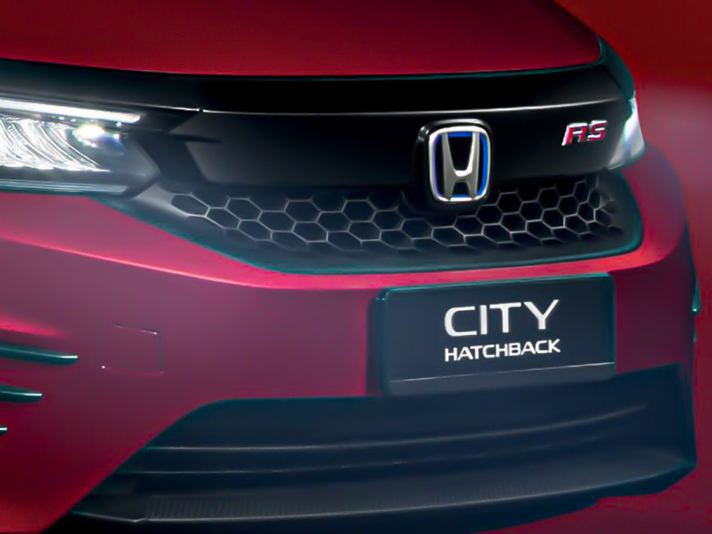
Is Honda City Hatchback Still Worth Buying in 2025?
JohnJun 26, 2025
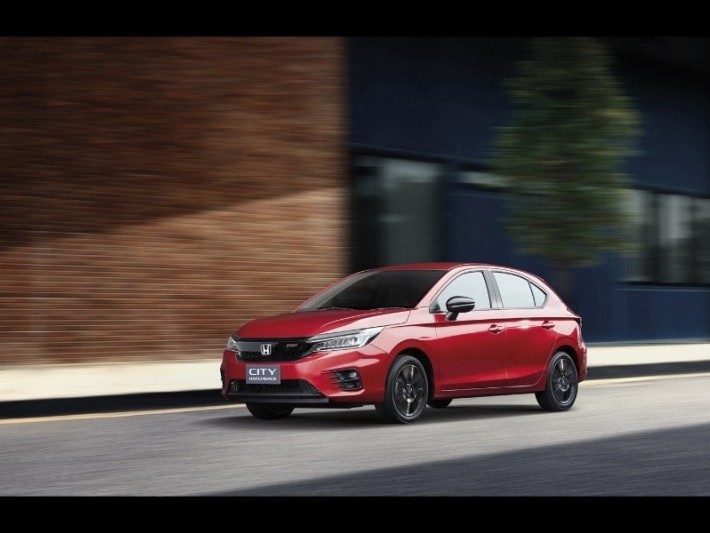
High Cost-Performance: Is the Honda City Hatchback Worth Buying? Dynamic Experience Revealed!
AshleySep 23, 2024
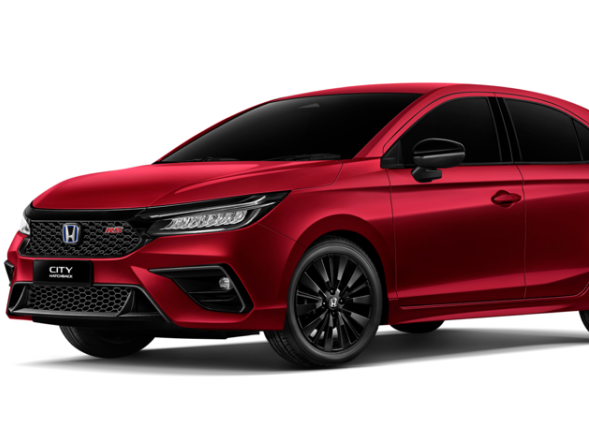
From Jazz to City Hatchback: The Perfect Transformation of Honda Hatchback
LienJun 4, 2024
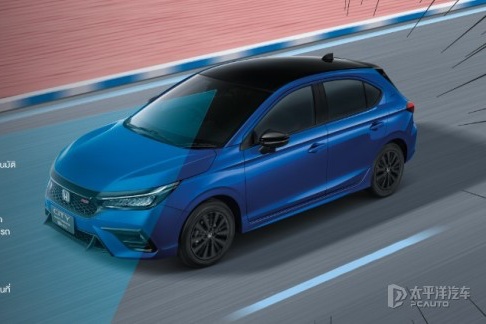
Honda City e HEV Hatchback RS: Fuel Efficiency
AshleyMay 4, 2024

Honda N-ONE e: Officially launched in the Japanese market, with a range of 295 kilometers
AshleySep 12, 2025
View More


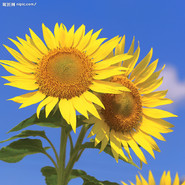




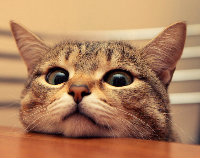





 Cars
Cars




Pros
Cons